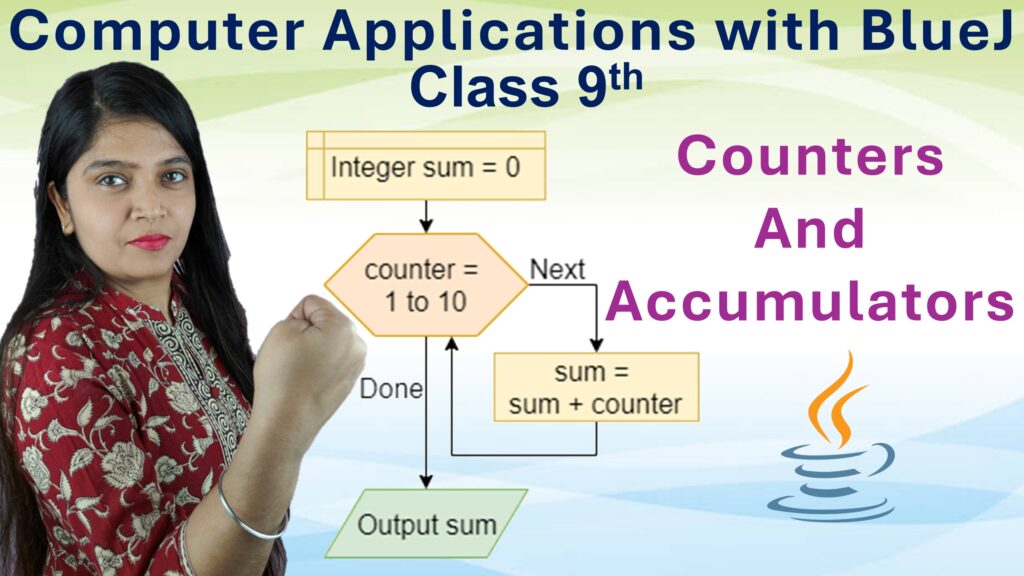Exercise: 1-D
Q1: Multiple Choice Type
i. \(-\frac{4}{9}\) divided by \(-\frac{2}{3}\) gives:
Step 1: \(\frac{-4}{9} \div \frac{-2}{3} = \frac{-4}{9} \times \frac{3}{-2}\)
Step 2: Multiply the numerators and denominators:
\[
= \frac{-4 \times 3}{9 \times -2} = \frac{-12}{-18} = \frac{2}{3}
\]
Correct Answer: a. \(\frac{2}{3}\)
ii. The rational number by which should \(\frac{1}{2}\) be divided to get \(-\frac{2}{3}\) is:
Let the number be x.
Then, \(\frac{1}{2} \div x = -\frac{2}{3}\)
So, \(x = \frac{1}{2} \div -\frac{2}{3} = \frac{1}{2} \times \frac{-3}{2} = \frac{-3}{4}\)
Correct Answer: b. \(-\frac{3}{4}\)
iii. For three rational numbers a, b and c; which of the following is correct:
Let’s analyze each option:
– a. \(a \div b = b \div a\) — False (division is not commutative)
– b. \(a \times (b \div c) = (a \div b) \times (a \div c)\) — False
– c. \(a\div\left(b\div c\right)=(a\div\ b)\div(a\div\ c)\) — False
– d. \(a \times (b \div c) \ne a \div b \div c\) — True
So the most accurate mathematical identity is:
Correct Answer: d. \(a \times (b \div c) \ne a \div b \div c\)
iv. The product of two rational numbers is \(-7\frac{2}{3}\). If one of them is \(3\frac{5}{6}\), the other number is:
Convert to improper fractions:
\[
-7\frac{2}{3} = -\frac{23}{3}, \quad 3\frac{5}{6} = \frac{23}{6}
\]
Let x be the required number. So:
\[
x \times \frac{23}{6} = -\frac{23}{3} \Rightarrow x = \frac{-23}{3} \div \frac{23}{6} = \frac{-23}{3} \times \frac{6}{23} = -2
\]
Correct Answer: d. -2
v. \((8\div3)\div\left(3\div8\right)\) is equal to:
\[
= \frac{8}{3} \div \frac{3}{8} = \frac{8}{3} \times \frac{8}{3} = \frac{64}{9}
\]
Correct Answer: a. \(\frac{64}{9}\)
Q2: Evaluate
i. \(1\div\frac{1}{3}\)
\[
= 1 \times \frac{3}{1} = 3
\]
Answer: 3
ii. \(3\div\frac{3}{5}\)
\[
= 3 \times \frac{5}{3} = \frac{15}{3} = 5
\]
Answer: 5
iii. \(-\frac{5}{12}\div\frac{1}{16}\)
\[
= -\frac{5}{12} \times \frac{16}{1} = \frac{-80}{12} = \frac{-20}{3}
\]
Answer: \(-\frac{20}{3}\)
iv. \(-\frac{21}{16}\div\left(\frac{-7}{8}\right)\)
\[
= -\frac{21}{16} \times \frac{-8}{7} = \frac{168}{112} = \frac{3}{2}
\]
Answer: \(\frac{3}{2}\)
v. \(0\div\left(-\frac{4}{7}\right)\)
\[
= 0
\]
Answer: 0
vi. \(\frac{8}{-5}\div\frac{24}{25}\)
\[
= -\frac{8}{5} \times \frac{25}{24} = \frac{-200}{120} = \frac{-5}{3}
\]
Answer: \(-\frac{5}{3}\)
vii. \(-\frac{3}{4}\div\left(-9\right)\)
\[
= -\frac{3}{4} \times \frac{1}{-9} = \frac{3}{36} = \frac{1}{12}
\]
Answer: \(\frac{1}{12}\)
viii. \(\frac{3}{4}\div\left(-\frac{5}{12}\right)\)
\[
= \frac{3}{4} \times \frac{-12}{5} = \frac{-36}{20} = \frac{-9}{5}
\]
Answer: \(-\frac{9}{5}\)
ix. \(-5\div\left(-\frac{10}{11}\right)\)
\[
= -5 \times \frac{-11}{10} = \frac{55}{10} = \frac{11}{2}
\]
Answer: \(\frac{11}{2}\)
x. \(\frac{-7}{11}\div\left(\frac{-3}{44}\right)\)
\[
= \frac{-7}{11} \times \frac{44}{-3} = \frac{308}{33} = \frac{28}{3}
\]
Answer: \(\frac{28}{3}\)
Q3: Divide
i. \(3\ by\ \frac{1}{3}\)
\[
= 3 \div \frac{1}{3} = 3 \times \frac{3}{1} = \frac{9}{1} = 9
\]
Answer: 9
ii. \(-2\ by\ \left(-\frac{1}{2}\right)\)
\[
= -2 \div \left(-\frac{1}{2}\right) = -2 \times \left(-2\right) = 4
\]
Answer: 4
iii. \(0\ by\ \frac{7}{-9}\)
\[
= 0 \div \frac{-7}{9} = 0
\]
Answer: 0
iv. \(\frac{-5}{8}\ by\ \frac{1}{4}\)
\[
= \frac{-5}{8} \div \frac{1}{4} = \frac{-5}{8} \times \frac{4}{1} = \frac{-20}{8} = -\frac{5}{2}
\]
Answer: \(-\frac{5}{2}\)
v. \(-\frac{3}{4}\ by\ -\frac{9}{16}\)
\[
= -\frac{3}{4} \div -\frac{9}{16} = \frac{-3}{4} \times \frac{-16}{9} = \frac{48}{36} = \frac{4}{3}
\]
Answer: \(\frac{4}{3}\)
Q4: The product of two rational numbers is -2. If one of them is \(\frac{4}{7}\), find the other.
Step 1: Let the required number be \(x\).
Given:
\[
\frac{4}{7} \times x = -2
\]Step 2: Isolate \(x\) by dividing both sides by \(\frac{4}{7}\).
\[
x = \frac{-2}{\frac{4}{7}} = -2 \times \frac{7}{4}
\]Step 3: Multiply.
\[
x = \frac{-14}{4} = -\frac{7}{2}
\]Answer: \(-\frac{7}{2}\)
Q5: The product of two numbers is \(-\frac{4}{9}. If one of them is \(\frac{-2}{27}\), find the other.
Step 1: Let the other number be \(x\).
Given:
\[
\frac{-2}{27} \times x = \frac{-4}{9}
\]Step 2: Isolate \(x\) by dividing both sides by \(\frac{-2}{27}\).
\[
x = \frac{-\frac{4}{9}}{-\frac{2}{27}} = \frac{-4}{9} \div \frac{-2}{27}
\]Step 3: Division of rational numbers is multiplication by reciprocal.
\[
x = \frac{-4}{9} \times \frac{27}{-2}
\]Step 4: Multiply the numerators and the denominators.
\[
x = \frac{(-4) \times 27}{9 \times (-2)} = \frac{-108}{-18}
\]Step 5: Simplify.
\[
x = 6
\]Answer: 6
Q6: m and n are two rational numbers such that \(m\timesn=-\frac{25}{9}\)
i. \(if\ m\ =\frac{5}{3},\ find\ n\),
Given:
\[
\frac{5}{3} \times n = -\frac{25}{9}
\]
Step 1: Divide both sides by \( \frac{5}{3} \)
\[
n = \frac{-\frac{25}{9}}{\frac{5}{3}} = \frac{-25}{9} \div \frac{5}{3}
\]
Step 2: Multiply by the reciprocal of the divisor
\[
n = \frac{-25}{9} \times \frac{3}{5}
\]
Step 3: Multiply the numerators and denominators
\[
n = \frac{-75}{45}
\]
Step 4: Simplify
\[
n = \frac{-5}{3}
\]
Answer: \( n = \frac{-5}{3} \)
ii. \(if\ n\ =-\frac{10}{9},\ find\ m\)
Given:
\[
m \times \left( -\frac{10}{9} \right) = -\frac{25}{9}
\]
Step 1: Divide both sides by \( -\frac{10}{9} \)
\[
m = \frac{-\frac{25}{9}}{-\frac{10}{9}} = \frac{-25}{9} \div \left( -\frac{10}{9} \right)
\]
Step 2: Multiply by reciprocal
\[
m = \frac{-25}{9} \times \frac{9}{-10}
\]
Step 3: Multiply the numerators and denominators
\[
m = \frac{225}{90}
\]
Step 4: Simplify
\[
m = \frac{5}{2}
\]
Answer: \( m = \frac{5}{2} \)
Q7: By what number must \(-\frac{3}{4}\) be multiplied so that the product is \(-\frac{9}{16}\)?
Step 1: Let the required number be \( x \)
\[
-\frac{3}{4} \times x = -\frac{9}{16}
\]
Step 2: Divide both sides by \(-\frac{3}{4}\)
\[
x = \frac{-\frac{9}{16}}{-\frac{3}{4}} = \frac{-9}{16} \div \left(-\frac{3}{4}\right)
\]
Step 3: Division means multiplication by reciprocal
\[
x = \frac{-9}{16} \times \frac{4}{-3}
\]
Step 4: Multiply numerators and denominators
\[
x = \frac{(-9) \times 4}{16 \times (-3)} = \frac{-36}{-48}
\]
Step 5: Simplify
\[
x = \frac{3}{4}
\]Answer: \( \frac{3}{4} \)
Q8: By what number should \(\frac{-8}{13}\) be multiplied to get 16?
Step 1: Let the required number be \( x \)
\[
\frac{-8}{13} \times x = 16
\]Step 2: Divide both sides by \(\frac{-8}{13}\)
\[
x = \frac{16}{\frac{-8}{13}}
\]Step 3: Division means multiplication by reciprocal
\[
x = 16 \times \frac{13}{-8}
\]Step 4: Multiply
\[
x = \frac{16 \times 13}{-8} = \frac{208}{-8}
\]Step 5: Simplify
\[
x = -26
\]Answer: \( -26 \)
Q9: If \(3\frac{1}{2}\) litres of milk costs ₹ 49, find the cost of one litre of milk?
Step 1: Convert the mixed number to improper fraction
\[
3\frac{1}{2} = \frac{7}{2}
\]Step 2: Let the cost of 1 litre = ₹x
\[
\frac{7}{2} \times x = 49
\]Step 3: Solve for x by dividing both sides by \(\frac{7}{2}\)
\[
x = \frac{49}{\frac{7}{2}} = 49 \times \frac{2}{7}
\]Step 4: Multiply
\[
x = \frac{49 \times 2}{7} = \frac{98}{7} = 14
\]Answer: ₹14 per litre
Q10: Cost of \(3\frac{2}{5}\) metre of cloth is ₹ \(88\frac{1}{2}\). What is the cost of 1 metre of cloth?
Step 1: Convert mixed numbers to improper fractions
\[
3\frac{2}{5} = \frac{17}{5}, \quad 88\frac{1}{2} = \frac{177}{2}
\]Step 2: Let the cost of 1 metre = ₹x
\[
\frac{17}{5} \times x = \frac{177}{2}
\]Step 3: Solve for x by dividing both sides by \(\frac{17}{5}\)
\[
x = \frac{\frac{177}{2}}{\frac{17}{5}} = \frac{177}{2} \times \frac{5}{17}
\]Step 4: Multiply
\[
x = \frac{177 \times 5}{2 \times 17} = \frac{885}{34}
\]Step 5: Convert to mixed number (optional)
\[
\frac{885}{34} = 26\frac{1}{34}
\]Answer: ₹26\(\frac{1}{34}\) per metre
Q11: Divide the sum of \(\frac{3}{7}\ and\ \frac{-5}{14}\ by\ -\frac{1}{2}\).
Step 1: Add the two rational numbers in the numerator
\[
\frac{3}{7} + \left(-\frac{5}{14}\right) = \frac{6}{14} – \frac{5}{14} = \frac{1}{14}
\]Step 2: Now divide the result by \(-\frac{1}{2}\)
\[
\frac{1}{14} \div \left(-\frac{1}{2}\right) = \frac{1}{14} \times \left(-2\right)
\]Step 3: Multiply
\[
= \frac{1 \times (-2)}{14} = \frac{-2}{14} = -\frac{1}{7}
\]Answer: \(-\frac{1}{7}\)
Q12: Find \((m\ +\ n)\ \div\ (m— n) \), if:
i. \(m=\frac{2}{3}\ and\ n=\frac{3}{2}\)
Step 1: Calculate \(m + n\)
\[
\frac{2}{3} + \frac{3}{2} = \frac{4}{6} + \frac{9}{6} = \frac{13}{6}
\]Step 2: Calculate \(m – n\)
\[
\frac{2}{3} – \frac{3}{2} = \frac{4}{6} – \frac{9}{6} = \frac{-5}{6}
\]Step 3: Divide \( (m + n) \div (m – n) \)
\[
\frac{13}{6} \div \frac{-5}{6} = \frac{13}{6} \times \frac{-6}{5} = \frac{-78}{30} = -\frac{13}{5}
\]Answer: \(-\frac{13}{5}\)
ii. \(m=\frac{3}{4}\ and\ n=\frac{4}{3}\)
Step 1: \(m + n = \frac{3}{4} + \frac{4}{3} = \frac{9}{12} + \frac{16}{12} = \frac{25}{12}\)
Step 2: \(m – n = \frac{3}{4} – \frac{4}{3} = \frac{9}{12} – \frac{16}{12} = \frac{-7}{12}\)
Step 3: \(\frac{25}{12} \div \frac{-7}{12} = \frac{25}{12} \times \frac{-12}{7} = \frac{-300}{84} = -\frac{25}{7}\)Answer: \(-\frac{25}{7}\)
iii. \(m=\frac{4}{5}\ and\ n=-\frac{3}{10}\)
Step 1: \(m + n = \frac{4}{5} + \left(-\frac{3}{10}\right) = \frac{8}{10} – \frac{3}{10} = \frac{5}{10} = \frac{1}{2}\)
Step 2: \(m – n = \frac{4}{5} – \left(-\frac{3}{10}\right) = \frac{8}{10} + \frac{3}{10} = \frac{11}{10}\)
Step 3: \(\frac{1}{2} \div \frac{11}{10} = \frac{1}{2} \times \frac{10}{11} = \frac{10}{22} = \frac{5}{11}\)Answer: \(\frac{5}{11}\)
Q13: The product of two rational numbers is -5. If one of these numbers is \(\frac{-7}{15}\), find the other.
Let the other rational number be \(x\).
We are given:
\[
\frac{-7}{15} \times x = -5
\]Step 1: Isolate \(x\)
\[
x = \frac{-5}{\left(\frac{-7}{15}\right)}
\]Step 2: Invert the divisor and multiply
\[
x = -5 \div \left(-\frac{7}{15}\right) = -5 \times \left(-\frac{15}{7}\right)
\]Step 3: Multiply
\[
x = \frac{75}{7}
\]Answer: \(\frac{75}{7}\)
Q14: Divide the sum of \(\frac{5}{8}\ and\ \frac{-11}{12}\) by the difference of \(\frac{3}{7}\ and\ \frac{5}{14}\).
Step 1: Write the expression
\[
\frac{\left(\frac{5}{8} + \frac{-11}{12}\right)}{\left(\frac{3}{7} – \frac{5}{14}\right)}
\]Step 2: Solve the numerator (Addition)
\[
\frac{5}{8} + \left(-\frac{11}{12}\right) = \frac{5}{8} – \frac{11}{12}
\]LCM of 8 and 12 = 24
\[
\frac{15}{24} – \frac{22}{24} = \frac{-7}{24}
\]Step 3: Solve the denominator (Subtraction)
\[
\frac{3}{7} – \frac{5}{14}
\]LCM of 7 and 14 = 14
\[
\frac{6}{14} – \frac{5}{14} = \frac{1}{14}
\]Step 4: Division of two rational numbers
\[
\frac{-7}{24} \div \frac{1}{14} = \frac{-7}{24} \times \frac{14}{1}
\]Step 5: Multiply
\[
\frac{-7 \times 14}{24 \times 1} = \frac{-98}{24}
\]Step 6: Simplify
\[
\frac{-98}{24} = \frac{-49}{12}
\]Answer: \(\frac{-49}{12}\)
Q15: The area of a rectangular plate is \(5\frac{5}{7}\) m2 and its length is \(3\frac{3}{4}\) m, find its breadth and its perimeter.
Step 1: Convert mixed fractions to improper fractions
Area = \(5\frac{5}{7} = \frac{40}{7}\) m²
Length = \(3\frac{3}{4} = \frac{15}{4}\) mStep 2: Use formula for area of rectangle
\[
\text{Area} = \text{Length} \times \text{Breadth}
\Rightarrow \text{Breadth} = \frac{\text{Area}}{\text{Length}} = \frac{40}{7} \div \frac{15}{4}
\]Step 3: Divide the fractions
\[
\frac{40}{7} \div \frac{15}{4} = \frac{40}{7} \times \frac{4}{15} = \frac{160}{105}
\]Step 4: Simplify
\[
\frac{160}{105} = \frac{32}{21}
\]Breadth = \(\frac{32}{21}\) m
Step 5: Use formula for perimeter of rectangle
\[
\text{Perimeter} = 2 \times (\text{Length} + \text{Breadth}) = 2 \times \left( \frac{15}{4} + \frac{32}{21} \right)
\]Step 6: Take LCM of 4 and 21
LCM = 84
\[
\frac{15}{4} = \frac{315}{84},\quad \frac{32}{21} = \frac{128}{84}
\]\[
\frac{315 + 128}{84} = \frac{443}{84}
\Rightarrow 2 \times \frac{443}{84} = \frac{886}{84}
\]Step 7: Simplify
\[
\frac{886}{84} = \frac{443}{42}
\]Perimeter = \(\frac{443}{42}\) m
Q16: The area of piece of paper is \(7\frac{3}{26}\) cm2 and its breadth is \(2\frac{9}{13}\) cm. Find its length and perimeter.
Step 1: Convert mixed fractions to improper fractions
\[
\text{Area} = 7\frac{3}{26} = \frac{(7 \times 26) + 3}{26} = \frac{182 + 3}{26} = \frac{185}{26}
\]\[
\text{Breadth} = 2\frac{9}{13} = \frac{(2 \times 13) + 9}{13} = \frac{26 + 9}{13} = \frac{35}{13}
\]Step 2: Use formula: Area = Length × Breadth
\[
\text{Length} = \frac{\text{Area}}{\text{Breadth}} = \frac{185}{26} \div \frac{35}{13}
\]Step 3: Division of fractions means multiplying by reciprocal
\[
\text{Length} = \frac{185}{26} \times \frac{13}{35}
\]Now, simplify:\[
\frac{185}{26} \times \frac{13}{35} = \frac{185 \times 13}{26 \times 35}
\]Factor and simplify:\[
185 = 5 \times 37,\quad 13 \text{ is a prime},\quad 26 = 2 \times 13
\]Cancel 13:\[
= \frac{185}{2 \times 35} = \frac{185}{70}
\]Simplify:\[
\frac{185}{70} = \frac{37}{14}
\]Length = \(\frac{37}{14}\) cm
Step 4: Find the perimeter of the rectangle
Formula:
\[
\text{Perimeter} = 2 \times (\text{Length} + \text{Breadth}) = 2 \times \left(\frac{37}{14} + \frac{35}{13}\right)
\]Take LCM of 14 and 13 = 182
\[
\frac{37}{14} = \frac{37 \times 13}{182} = \frac{481}{182},\quad \frac{35}{13} = \frac{35 \times 14}{182} = \frac{490}{182}
\]\[
\text{Sum} = \frac{481 + 490}{182} = \frac{971}{182}
\]\[
\text{Perimeter} = 2 \times \frac{971}{182} = \frac{1942}{182}
\]Simplify:\[
= \frac{971}{91}
\]Perimeter = \(\frac{971}{91}\) cm







Leave a Comment